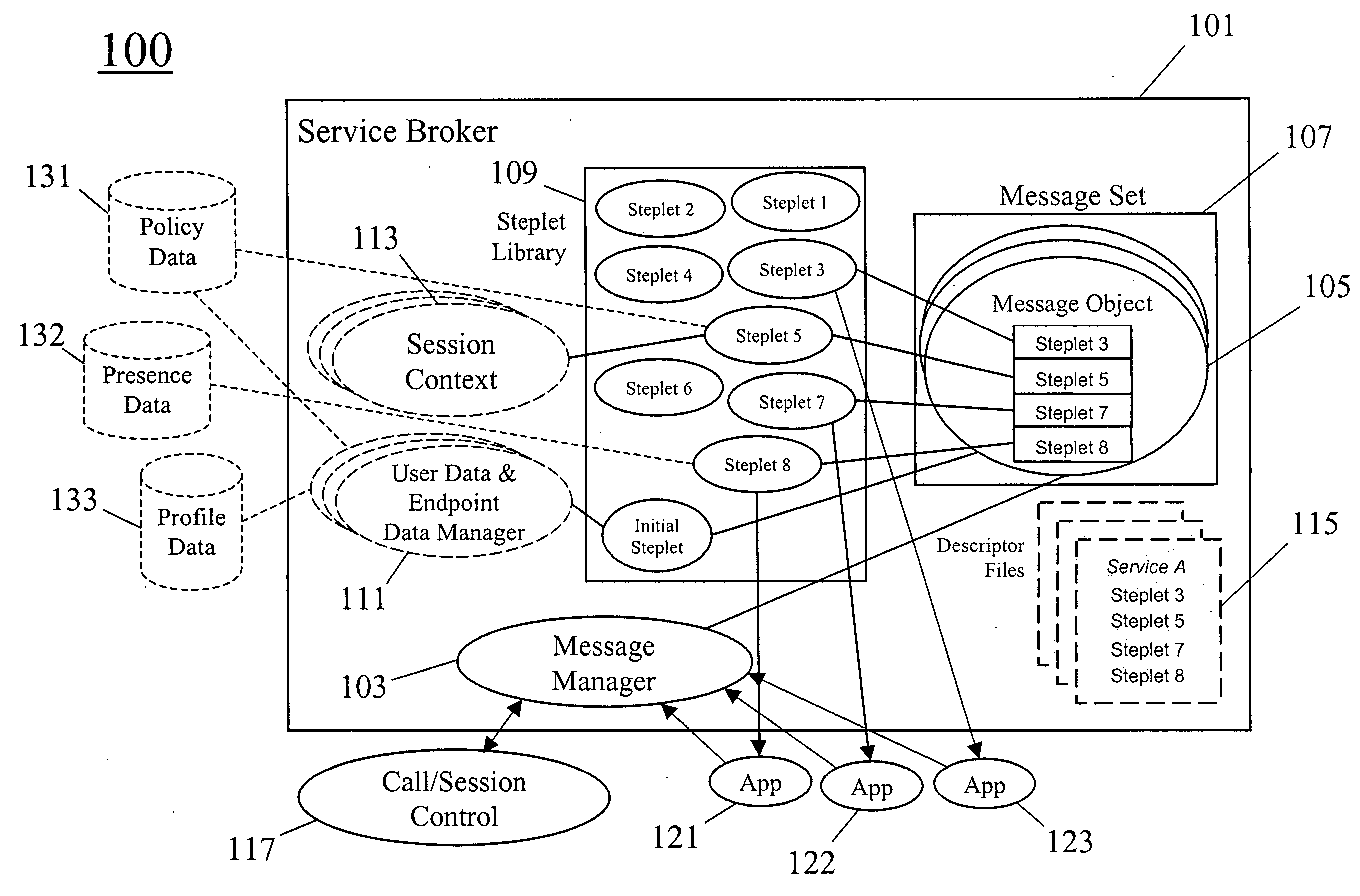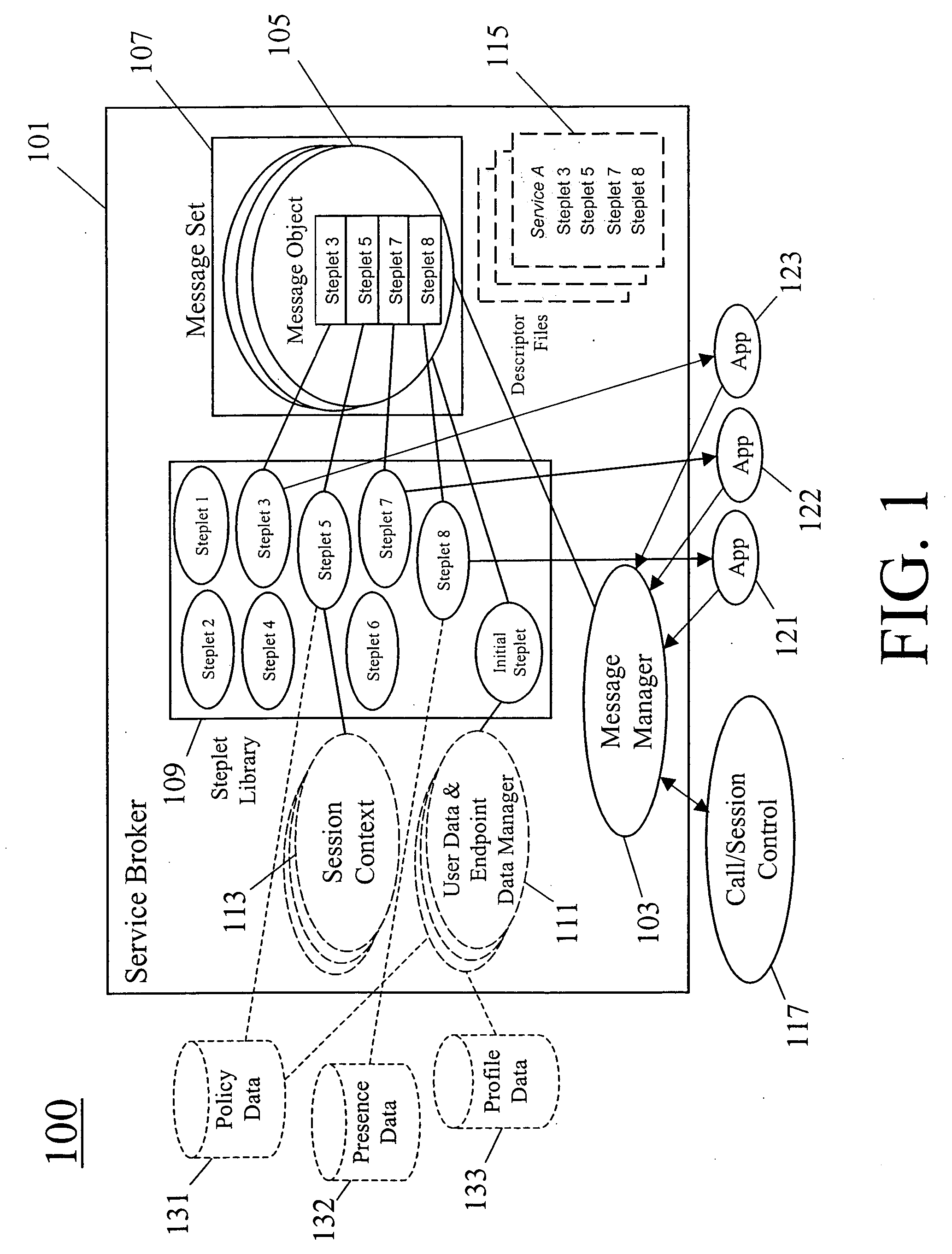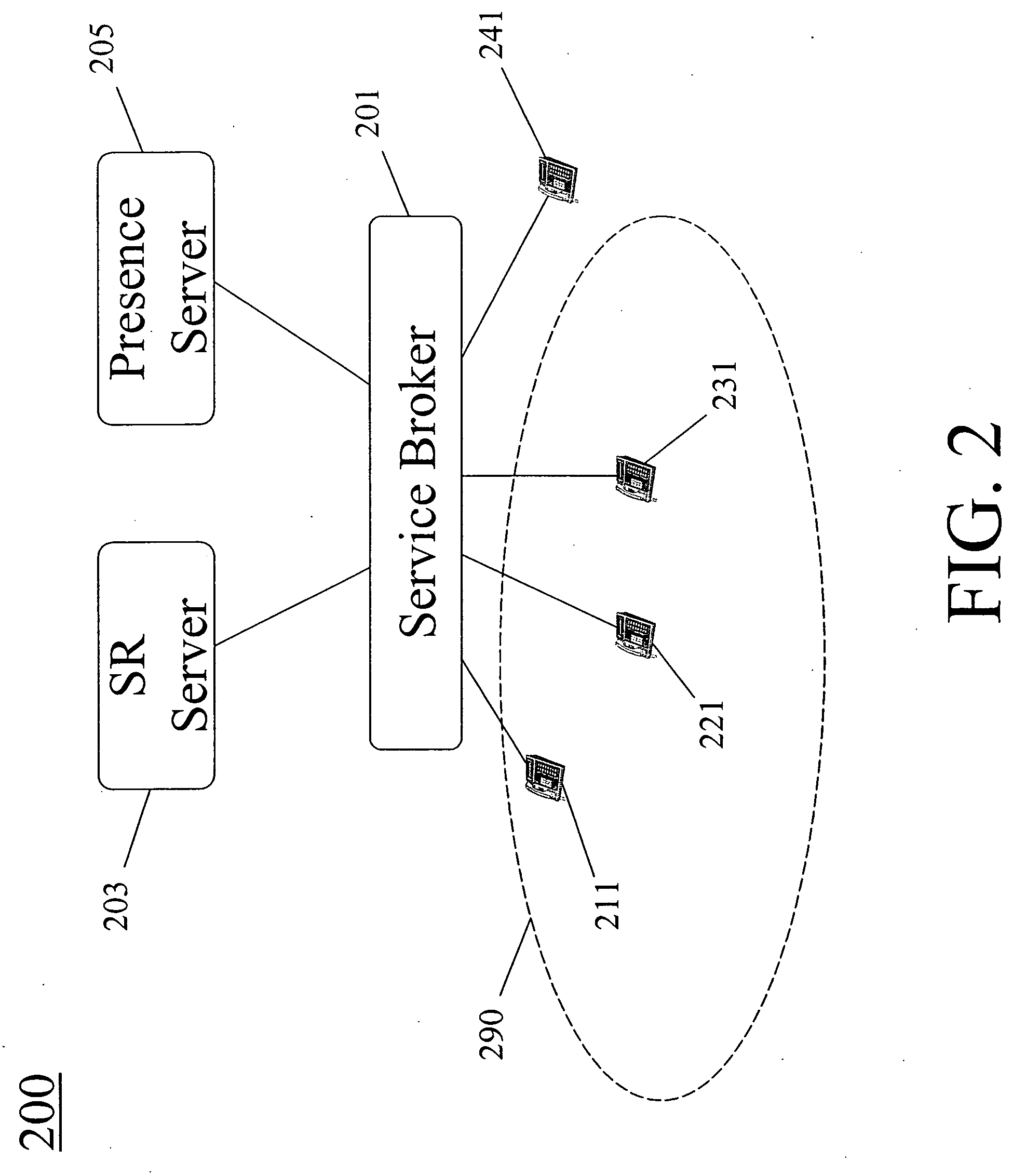Method for providing feature interaction management and service blending
a technology of interaction management and feature, applied in the field of communication systems, can solve the problems of limited static sequence of features or services, lack of flexibility and per-user customizability of the control method of interactions, and difficulty in controlling interactions between features and between services, etc., and achieve the effect of maximum flexibility
- Summary
- Abstract
- Description
- Claims
- Application Information
AI Technical Summary
Benefits of technology
Problems solved by technology
Method used
Image
Examples
Embodiment Construction
[0026]FIG. 1 depicts a service broker 101 in accordance with an exemplary embodiment of the present invention. The essential functional modules of the service broker, comprising the steplet engine, are depicted in FIG. 1. Message Manager 103 is module that stimulates action within the service broker as a result of an incoming message. Message Manager 103 includes the message protocol stack, such as a SIP stack, and a dispatcher for the novel software elements called steplets that determine the feature interaction or service blending. Message Manager 103 creates a unique Message Object for each request message received and appends it to the Message List.
[0027] A Message Object 105 is created for each message received and all other information bound to that message, including the list of steplets for execution and any desired attributes. Message Set 107 includes the list of all current Message Objects.
[0028] Steplet and Class Library 109 includes the steplets and classes that progra...
PUM
 Login to View More
Login to View More Abstract
Description
Claims
Application Information
 Login to View More
Login to View More - R&D
- Intellectual Property
- Life Sciences
- Materials
- Tech Scout
- Unparalleled Data Quality
- Higher Quality Content
- 60% Fewer Hallucinations
Browse by: Latest US Patents, China's latest patents, Technical Efficacy Thesaurus, Application Domain, Technology Topic, Popular Technical Reports.
© 2025 PatSnap. All rights reserved.Legal|Privacy policy|Modern Slavery Act Transparency Statement|Sitemap|About US| Contact US: help@patsnap.com



